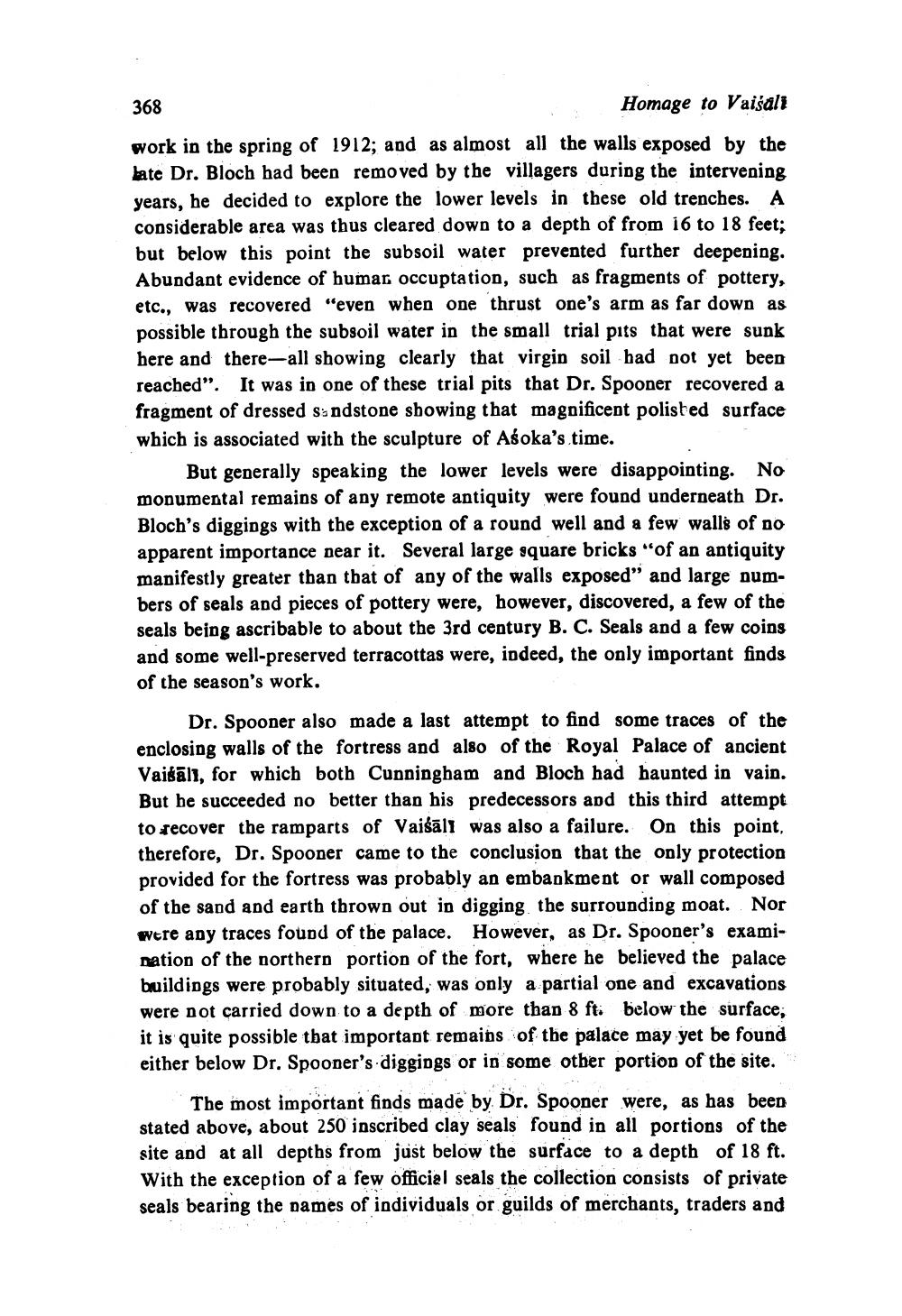________________ 368 Homage to Vaisali work in the spring of 1912; and as almost all the walls exposed by the late Dr. Bloch had been removed by the villagers during the intervening years, he decided to explore the lower levels in these old trenches. A considerable area was thus cleared down to a depth of from 16 to 18 feet; but below this point the subsoil water prevented further deepening. Abundant evidence of humar occuptation, such as fragments of pottery, etc., was recovered "even when one thrust one's arm as far down as possible through the subsoil water in the small trial pits that were sunk here and there-all showing clearly that virgin soil had not yet been reached". It was in one of these trial pits that Dr. Spooner recovered a fragment of dressed sandstone showing that magnificent polished surface which is associated with the sculpture of Asoka's time. But generally speaking the lower levels were disappointing. No monumental remains of any remote antiquity were found underneath Dr. Bloch's diggings with the exception of a round well and a few walls of no apparent importance near it. Several large square bricks "of an antiquity manifestly greater than that of any of the walls exposed" and large numbers of seals and pieces of pottery were, however, discovered, a few of the seals being ascribable to about the 3rd century B. C. Seals and a few coins and some well-preserved terracottas were, indeed, the only important finds of the season's work. Dr. Spooner also made a last attempt to find some traces of the enclosing walls of the fortress and also of the Royal Palace of ancient Vaigali, for which both Cunningham and Bloch had haunted in vain. But be succeeded no better than his predecessors and this third attempt to recover the ramparts of Vaisali was also a failure. On this point, therefore, Dr. Spooner came to the conclusion that the only protection provided for the fortress was probably an embankment or wall composed of the sand and earth thrown out in digging the surrounding moat. Nor were any traces found of the palace. However, as Dr. Spooner's examination of the northern portion of the fort, where he believed the palace buildings were probably situated, was only a partial one and excavations were not carried down to a depth of more than 8 ft. below the surface, it is quite possible that important remains of the palace may yet be found either below Dr. Spooner's diggings or in some other portion of the site. The most important finds made by Dr. Spooner were, as has been stated above, about 250 inscribed clay seals found in all portions of the site and at all depths from just below the surface to a depth of 18 ft. With the exception of a few official seals the collection consists of private seals bearing the names of individuals or guilds of merchants, traders and




